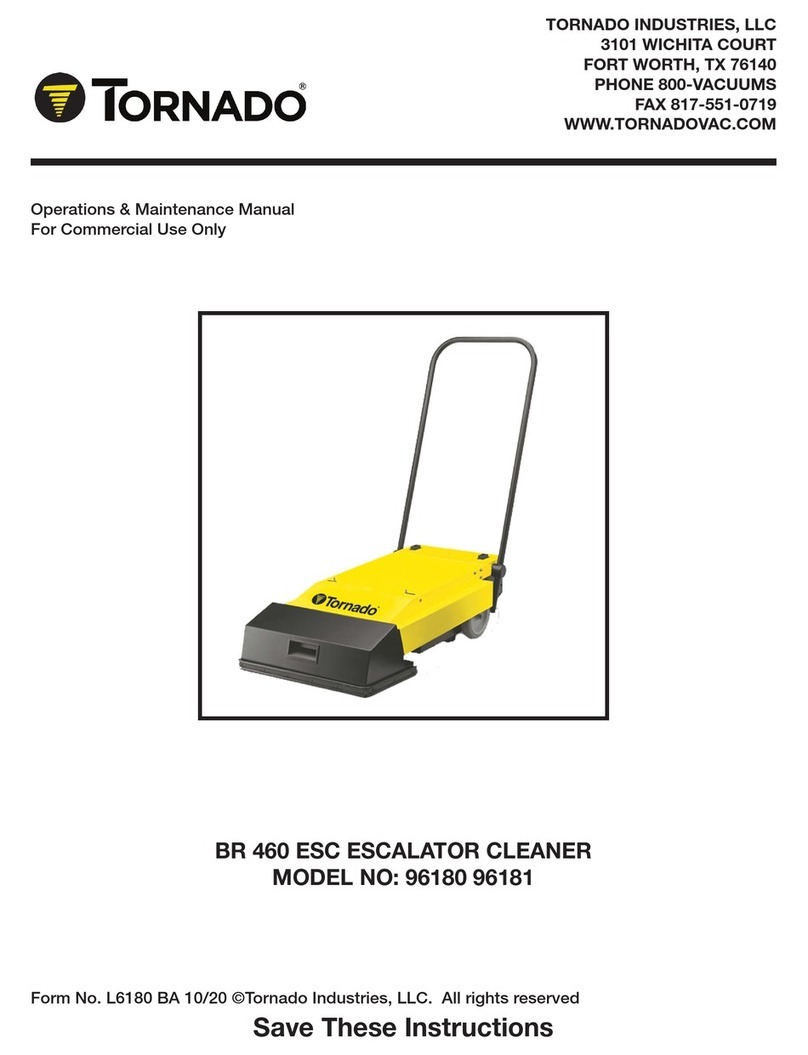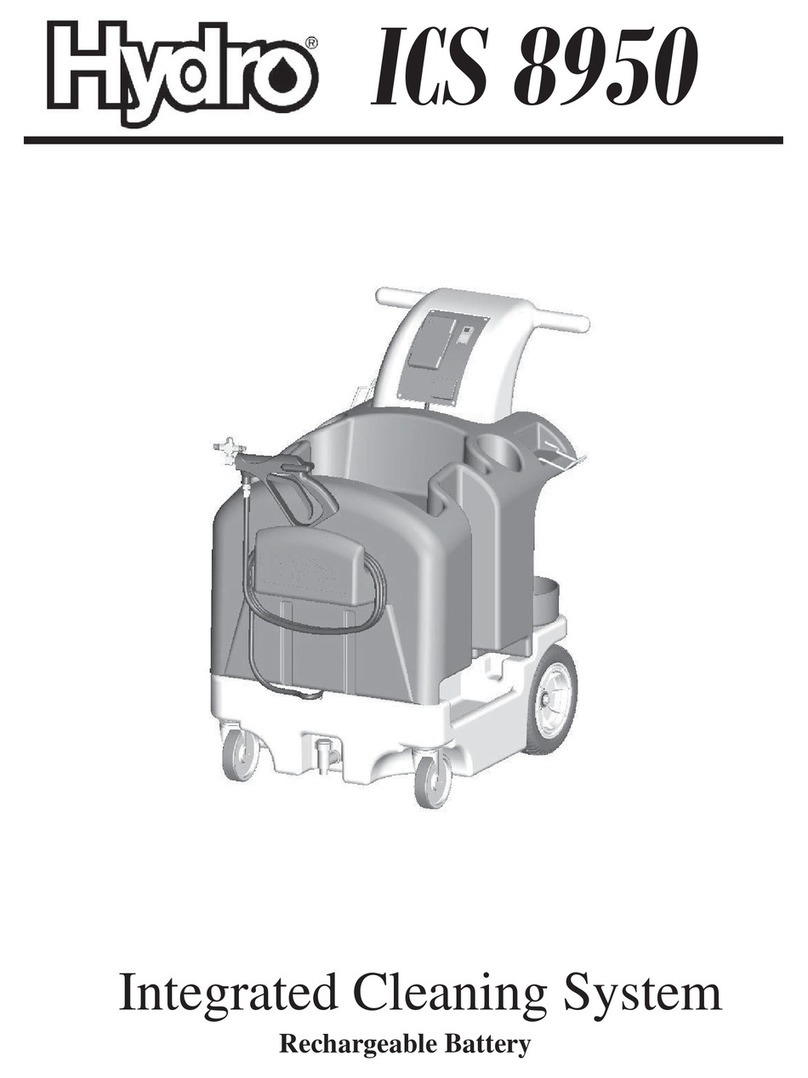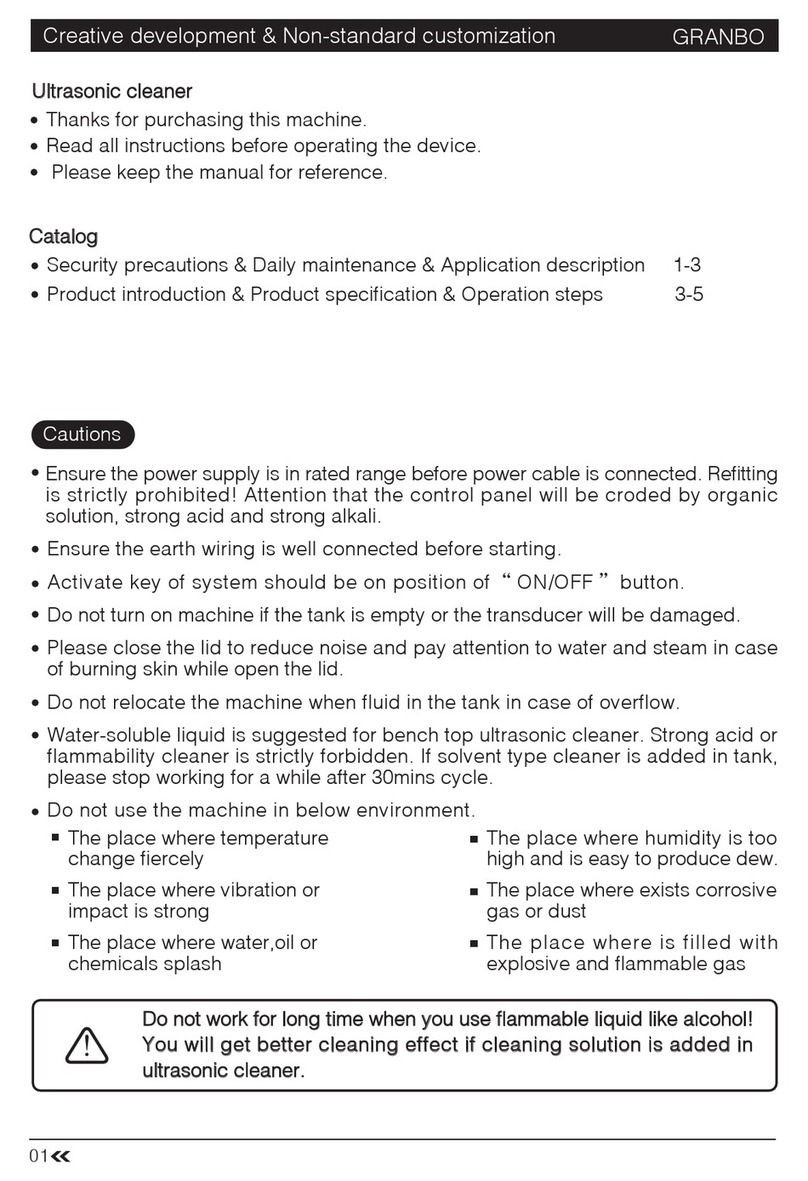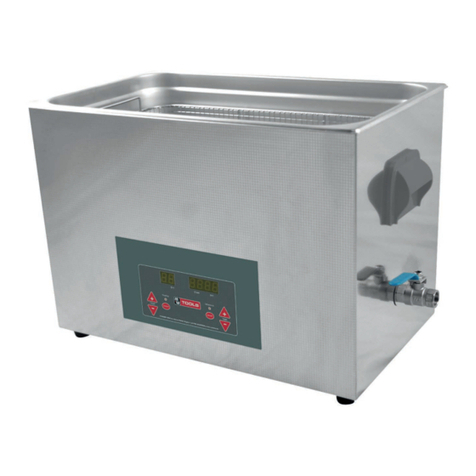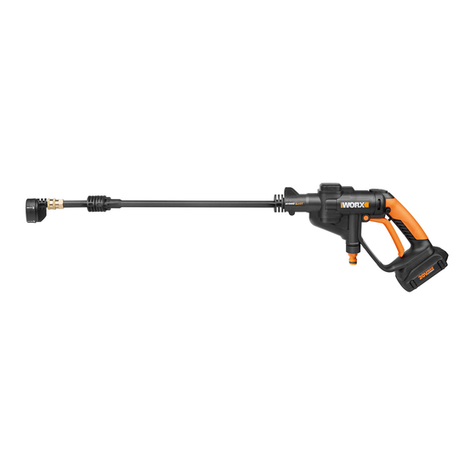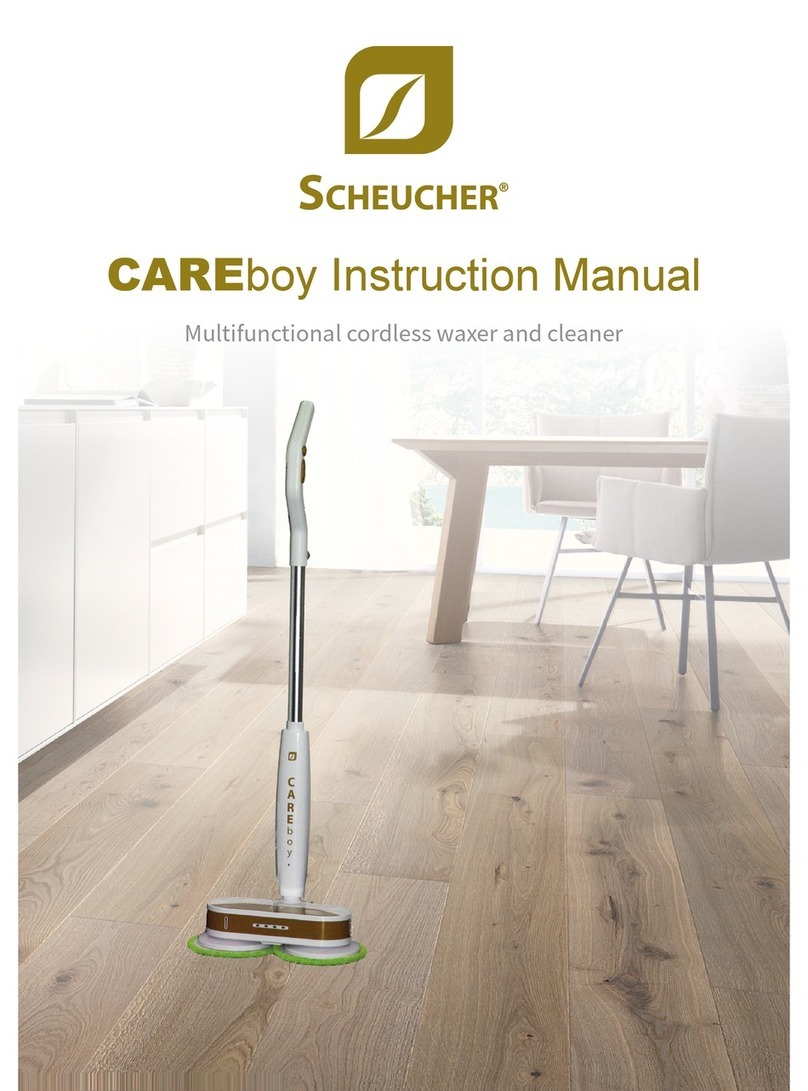ATAGO 4558 User manual

Error Messages
The following messages alert the user when an operation has failed.
The battery is low. The prism temperature is below the temperature range.
The ZERO button was pressed with nothing or something
other than water on the prism.
The prism temperature is above the temperature range.
The START button was pressed with nothing or an
insufficient amount of sample on the prism.
The instrument is faulty. (Replace the batteries. Contact
ATAGO if this error persists.)
The sample measured outside the measurement range.
When water is measured.
When the "New Cleaner Solution Memory" function is
performed with nothing on the prism surface.
Too much light is entering the prism, and the instrument
cannot measure accurately. (Shade the sample stage with
your hand and take a measurement again.)
Automatic Temperature Compensation
The readings are corrected, based on the temperature of the prism, within the automatic temperature compensation range.
【Caution】
◇ Measurements may fluctuate with hot or cold samples. Wait for approximately 20 seconds to press the START button. Measurements will stabilize
once the instrument acclimates to the sample temperature.
Storage and Maintenance
Store the instrument in a dry place away from direct
sunlight. Exposure to humidity and heat may damage the
instrument.
Clean and dry the sample stage thoroughly, following the “Cleaning” instructions.
Store the unit away from direct sunlight at a stable temperature with as little fluctuation
as possible.
Repair and Warranty
The instrument is warranted for one year from the date of purchase. This warranty is void if the instrument shows evidence of the following. Send the
included batteries as well if they are still in use.
•Having been disassembled by unauthorized personnel
•Damages to the prism and/or sample stage
•Water damage or having been dropped
•Having been misused and/or operated outside the environmental specifications
•Leakage from batteries other than those included with the unit
Repair services are available for a fee after the warranty expires. Contact an ATAGO authorized service center for service and support.
Please have the serial number information ready when contacting a service center.
Specifications
Measurement range Contam. % 0.0 to 30.0 Sample volume At least 0.3mL
(Automatic temperature
compensation)
Temperature 10.0 to 100.0˚C Maximum number of
data history
100
Resolution Contam. % 0.1 / 0.1˚C Output NFC Forum Type 4 Tag ISO/IEC 14443 Type A
Accuracy Contam. % ±1.0 / ±1˚C Output category :Date Time, Contam. [%], Temp [degC]
Automatic temperature 10 to 100˚C (e.g.) 2017/08/17 09:30:45, 14.0, 20.4
compensation range Backlight The backlight stays on for 30 seconds after
Ambient temperature range 10 to 40˚C any button is pressed.
International Protection class I P65 Battery life Approx. 11,000 measurements
Power supply Two (2) AAA alkaline batteries (when using alkaline batteries)
Measurement time Approx. 3 seconds Dimensions and weight 55 (W) x 31 (D) x 109 (H)mm, 100g (main unit only)
Patent Granted in Japan, United States, Germany, China and Taiwan.
Headquarters: The Front Tower Shiba Koen,
23rd Floor 2-6-3 Shiba-koen, Minato-ku,
Tokyo 105-0011, Japan
http://www.atago.net/
TEL: 1-425-637-2107
TEL: 91-22-2854-4915 / 4071-3232
TEL: 66-21948727-9 ,66-21171549
TEL: 55 16 3913-8400
TEL: 39 02 36557267
TEL: 86-20-38108256
TEL: 7-812-777-96-96
TEL: 234-707-558-1552
TEL: 7-727-257-08-95
2108K Printed in Japan
4558-E05
“Pocket” Potassium carbonate Refractometer
Instruction Manual
PAL-Hydrocarbon Cleaner
Cat.No.4558
Parts
Contents
Main unit ......... 1 Instruction Manual (this book) ..... 1 Calibration Report .. 1 AAA batteries ........... 2
AAA alkaline batteries are included. Remove the tape from the battery compartment before inserting the batteries.
ATAGO instruments are rigorously inspected to ensure each unit meets the highest standards of quality assurance.
Introduction
Thank you for purchasing the instrument. Carefully read and follow all instructions. Keep this manual for future reference.
Safety Instructions
Read and follow all safety instructions before operating the instrument. Failure to comply with the following instructions may result in personal injury or
property damage.
◇ Ensure safety when handling hazardous materials. Observe precautionary measures and use protective equipment, Be aware of the hazards of such
chemicals and emergency response guidelines.
◇ ATAGO may not be held liable for any injury or damage arising in connection with handling of hazardous materials during the use of the instrument.
◇ Do not drop the instrument or subject it to strong physical shock.
◇ Do not attempt to repair, modify, or disassemble the instrument.
◇ Carefully read this manual to have basic knowledge of the function of each component.
◇ ATAGO is not liable for any loss and damage caused by the measurement and use of this instrument.
◇ Some acids may corrode the glass prism and/or metal sample stage, which may cause erroneous measurements.
◇ Do not use metal tools, such as a spoon, as they may scratch the prism, resulting in erroneous measurements.
◇ Do not use water above 50℃ to rinse the instrument.
◇ Only use the specified battery type. Observe proper polarities, properly aligning the anodes and cathodes.
◇ Store the instrument away from direct sunlight/heat sources and excessive amounts of dust/debris.
◇ Do not expose the instrument to a rapid change in ambient temperature.
◇ Do not subject the instrument to strong vibration.
◇ Do not subject the instrument to extreme cold temperature.
◇ Do not place the instrument under anything heavy.
◇ Loosen the battery compartment cover for air transportation.
<International Protection Classification IP65>
◇ The instrument is water-resistant, not waterproof, and should not be submerged.
<Chemical Resistance of Body Case>
◇ The body case is made of resin. Do not expose it to water vapor. Some solvents may compromise the structural integrity of the instrument.
Press to take
measurements and
hold down to turn off
the display.
START button
(POWER button)
Place and remove
batteries from here.
Battery
compartment
ZERO button
START button & ZERO button
Press when performing the New
Cleaner Solution Memory function.
Press to set date, time, and delete
data history.
Lanyard hole
Sample stage
Apply water and samples on
the glass prism located in the
center of the sample stage.
Image is for explanation purposes only. It may be different than the
actual product purchased.
LCD
Measurement results,
prism temperature,
remaining battery
charge, etc., are
displayed.
The displayed value
is an example.
Please read the "Preparation" section on the inside page carefully.
Press to perform zero-setting
and set a conversion coefficient.
The warranty period will
be extended from 1 year
to 2 years when you
register customer
information.
ATAGO Logger NFC
can also be downloaded at the same
time.
Trouble scanning the code? Access
this link
https://www.atago.net/ur/
index.php?l=en
QR code
The warranty period
extension method
1 year 2 years
Err

Measurement
Preparation
● Zero-setting
【Caution】
◇ Zero-set the instrument at the beginning of each day before use as well as after replacing the batteries.
1.Wipe the prism clean
and apply about 0.3mL of
tap water.
2.Press the START
button, and after “- -
-” appears, “HHH” and
the prism temperature
are displayed.
3. Press
the ZERO
button while
the water is
on the prism.
4.Zero-setting
is complete
when “000”
blinks twice and
then stops.
Wipe the
prism clean
with tissue
paper.
For the hydrocarbon cleaner being
measured, the "New Cleaner Solution
Memory" step is :
Not complete Proceed with the New Cleaner Solution Memory function.
Complete Proceed to measurement.
● New Cleaner Solution Memory
This operation will record the refractive index of new hydrocarbon cleaning solution to the instrument.
【Caution】
◇ This operation must be completed before using the instrument for the first time after purchase as well as before using a
different type of hydrocarbon cleaner solution.
1.Wipe the prism clean, and apply
about 0.3mL of new hydrocarbon
cleaner solution on the prism.
2.Press the START and ZERO buttons simultaneously
while it is turned on..
【Caution】 Press the START and ZERO buttons for more
than 2 seconds.
→NFC Date and time setting
3.After "CCC" has
flashed, "CCC" will display
and the New Cleaner
Solution Memory function
is completed.
Measurement
【Caution】
◇ Do not splash water above 50 ˚C. The plastic may warp, which may compromise the water resistance.
◇ The displayed temperature is that of the prism and may not necessarily match the temperature of the sample.
1.Wipe the prism clean and apply
about 0.3mL of the sample.
2.Press the START
button.
3.After "- - -" appears,
the measurement and the
prism temperature are
displayed.
LCD Auto Shut-off
The instrument will turn itself
off after 2 minutes of inactivity.
To manually turn it off, hold
down the START button for
more than 2 seconds.
For oily/fatty samples
Try stirring the sample on the
prism while measuring to
improve the repeatability of
oily/fatty samples.
Cleaning
1. Wipe off the sample.
2. Clean the prism and sample stage with a mild soap, and rinse well with water thoroughly.
3. Dry the area with tissues thoroughly.
Measurement Value
This instrument converts the difference between the refractive index of "new" hydrocarbon cleaner solution and "oil
contaminated mixture" and displays as contamination %. The "difference in refractive index vs. contamination %" will vary by the
type of hydrocarbon cleaner solution and the type of oil contaminant. For this reason, the contamination % displayed by the
instrument and the actual contamination % may vary. Use the conversion function when the actual contamination % is desired.
Conversion Function
Find the conversion coefficient from the instrument's measurement results and the actual contamination %, and once the
coefficient is set on the unit, it will display converted values.
y = ax y: Converted value (Actual contamination %) a: conversion coefficient x: Measurement value from instrument
Obtaining conversion coefficient
1. Mix together 95g of new hydrocarbon cleaner solution with 5g of contaminant oil to create a 5% contaminated sample mixture.
2. Measure the mixture after performing the "New Cleaner Solution Memory" function with new solution.
3. Divide the contamination% by the value from step2 to find the conversion coffficient.
Example: When the measurement result on the instrument is 4.0%, the equation is 5.0 ÷ 4.0 = 1.25
Setting conversion coefficient
1. Hold down the
ZERO button for
more than 5 seconds
while it is turned on.
2. The current
conversion
coefficient and 'a' is
displayed.
(Example: 1.00)
3. Enter the conversion
coefficient.
ZERO to change the number:
0, 1, 2…8, 9, 0, 1, 2…
START to confirm and
move to the next decimal
place.
1→2→3
4. Once the third digit is confirmed with the
START button, the set conversion coefficient
will flash 3 times before disappearing from the
screen.
Conversion coefficient
setting complete
Flash (Example: 1.25) Light off
∗ To disable the conversion function, set the coefficient value to factory default
value (1.00).
∗ The measurement range is shifted accoring to the conversion coefficient setting.
∗ When the conversion coefficient function is active, "Con" will be displayed in the
upper part of the screen during measurement.
Screen image when the conversion
function is on during measurement.
Replacing the Batteries
【Caution】
◇ Fasten the battery compartment cover tightly to prevent water ingress or poor connection, which will cause
erroneous measurements. Push the cover in firmly and turn.
◇ When the O-ring on the cover is dirty or damaged, the water resistance may be compromised. (Figure 1)
◇ When the battery icon indicates the low power level ( ), replace both batteries with a brand new set of
AAA alkaline batteries (1.5V).
◇ Static images may occasionally appear on LCD. Such retained pixel charges do not indicate a faulty display,
consume the battery power, or affect the instrument’s performance in any way.
◇ Check the expiration dates on batteries before purchase.
◇ Zero-set the instrument after the batteries are replaced.
1. Insert a coin in the
groove on the battery
compartment cover. Turn
the coin counterclockwise
to remove the cover.
2. Insert batteries,
observing the correct
polarity.
3. Align the cover and push
it down.
4. Close the battery
compartment cover by
pushing the cover in with a
coin in the groove and turning
it clockwise until it stops.
*Turning excessively may cause
malfunction.
Open Close
Groove
Figure1
O-ring
*Make
sure that
"CCC "is
dis
p
la
y
ed.
CCC



